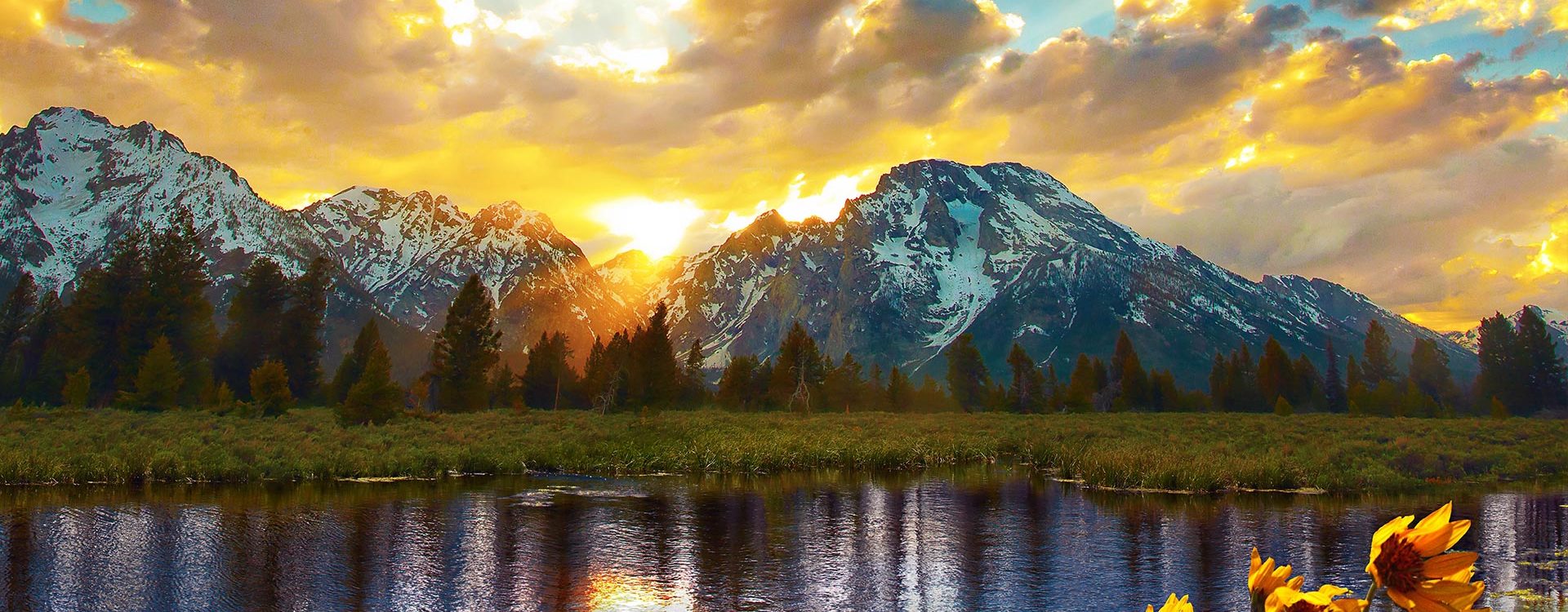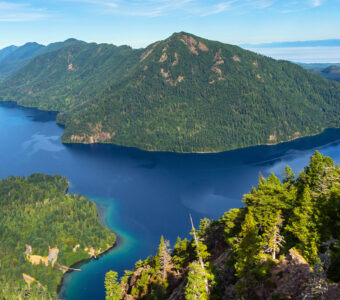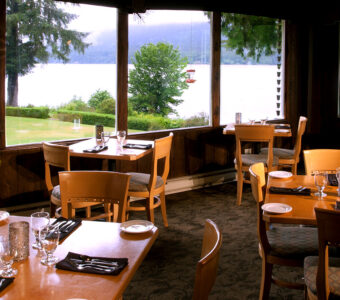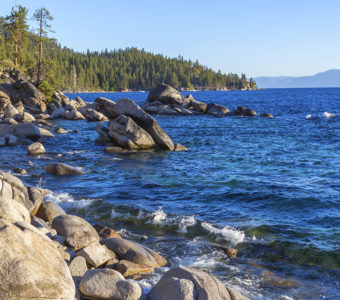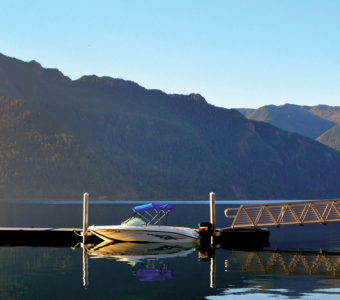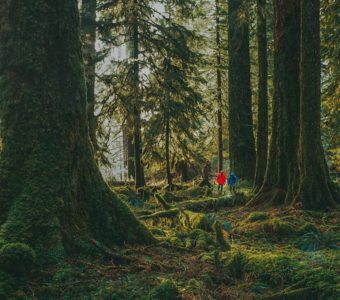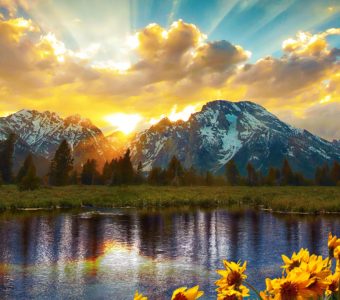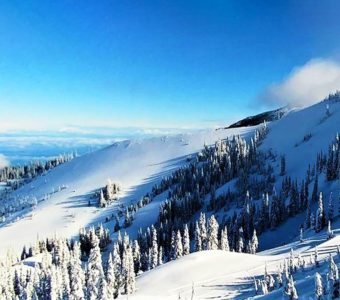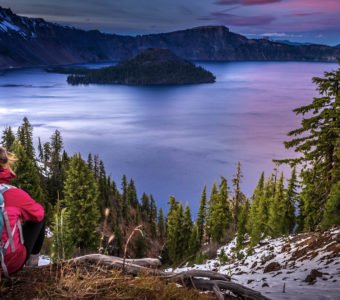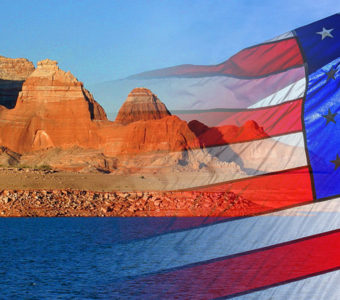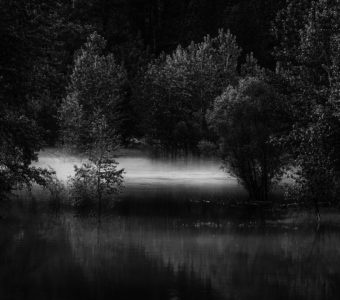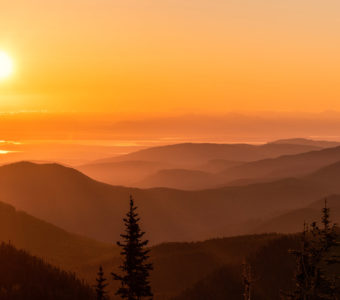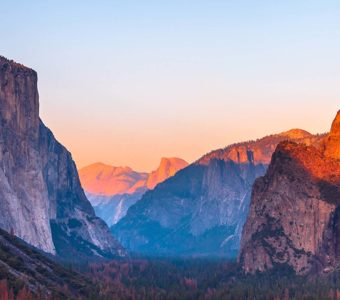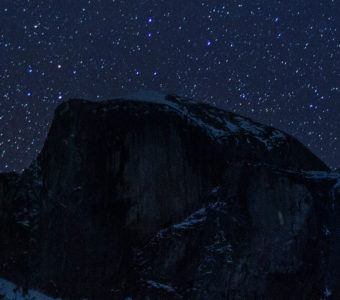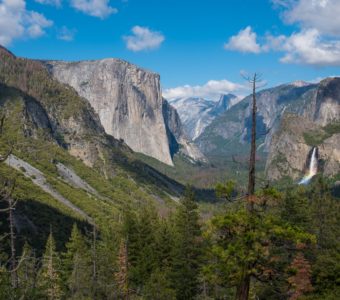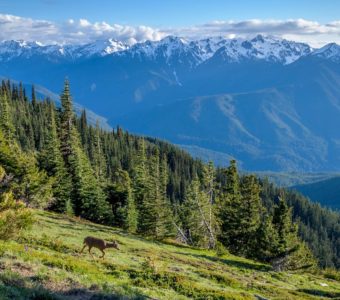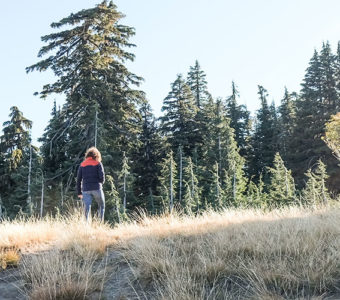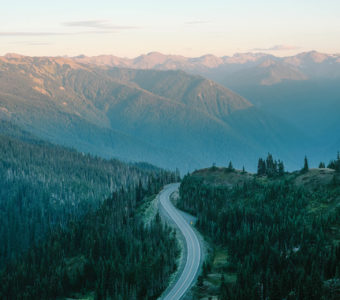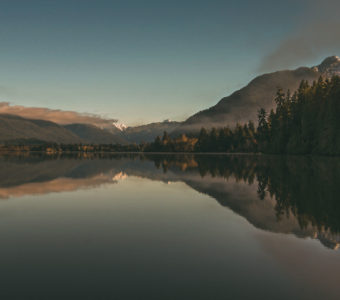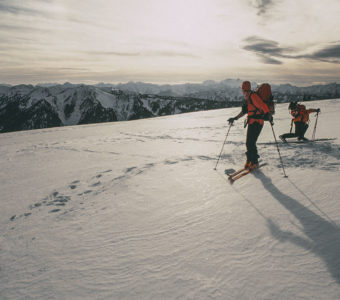Serene lake view of the Grand Tetons
With flowers just starting to pop their heads out of the ground you might be feeling the itch to do some spring cleaning in your home. Mother Nature also needs some spring cleaning. As Earth Day approaches, consider a trip to a national park to enjoy the bountiful beauty that Mother Nature provides in the spring.
On your visit to a national park this spring, you’ll be joined by many other travelers. In 2019, the U.S. national parks received over 327 million visitors. With all those visitors, Mother Nature needs a little spring cleaning help to ensure the parks remain as beautiful as possible. Here are a few ways you can get involved.
Practice Leave No Trace
Crater Lake’s deep, blue water will be enjoyed by generations to come through everyone’s efforts to reduce pollution and litter.
The most important part of your visit to a national park, no matter when you visit, is to practice the Leave No Trace Seven Principles. When you visit a natural space, you want to leave it looking exactly as it did when you arrived — if not a little better.
There are a number of aspects to the Leave No Trace Seven Principles, but the most common are to carry out what you bring in, stay on the trails, take only photos, and beware of noise pollution.
Stay on Trails
No matter how careful we are, our presence in nature changes the natural landscape and affects the animals who live there. To limit the effects of people on nature, the National Park Service builds trails. These trails concentrate foot traffic and damage to one area.
When visiting a national park, stay on the trail to limit your impact on nature and the local wildlife.
Take Only Photos
It can be so tempting to take a little bit of nature home with you. It’s important to leave sticks, flowers, and rocks where you find them and to not take anything home with you. These natural elements are used by local wildlife to build homes and to feed themselves. If you take them home, the wildlife will be left without.
When you visit a national park, be sure to take only photos, everything else stays in the park.
Be Aware of Noise Pollution
For the most part, nature is quiet. It’s one of the many reasons humans are drawn to spend time at national parks — to escape the noise and bustle of urban life. When you visit a national park, be considerate of the noise you make and its effect on other visitors and nearby animals.
Try to limit noise to quiet conversation. Avoid playing music without headphones, shouting, and uncontrolled barking from dogs.
Go By Foot or Share Transport
Being a mindful hiker, helps keep the parks free of damage and debris.
A major contributor to pollution in national parks is the noise and air pollution from cars and trucks. As visitors drive through the park, their vehicles contribute to air pollution and the engine noise is disruptive to animals and other visitors.
When planning your national park trip, consider planning hikes and traveling by foot through nature as much as possible. If you want to see more of the park or can’t hike, consider an organized tour by shared transport or bus to limit your contribution to emissions.
Consider Your Food Waste and Trash
Camping is a great way to connect with nature, just be sure to leave no trace behind!
Food waste, human waste, and trash damage the natural landscape can be harmful if eaten by wildlife and disrupt the beauty of nature. The simplest rule to remember when visiting a national park: if you bring it in, pack it out and leave nothing behind.
To help limit the effects of trash on the landscape, many national parks are starting to compost trash and food waste thrown away by park visitors. Even still, one of the best things you can do to help your national park is to remove everything you bring in with you.
Research Park Guidelines and Plan Ahead
Enjoying the silence of Lake Powell.
Reading this blog is a great first step towards being a good steward of our national parks. Each park is unique, so before you go, do some research to learn about the national park that you’re visiting. This will help you to make decisions that will make your trip low impact on the environment.
Another principle of the Leave No Trace Seven Principles that you can start practicing right now is to plan ahead for your trip. When you plan ahead for your visit to a national park, you can plan what you’ll pack, how you’ll get there, and what you’re going to eat. By planning ahead, you can limit what food items you take with you to those that make minimal trash and what transportation you’ll use so you limit the air and noise pollution you contribute.
Get Involved
A collective effort to help preserve our parks help ensure the health of its ecosystem. You can also do your part!
Practicing Leave No Trace ensures that you leave the national park just as good as when you arrived. But, if you want to do even more for a national park, you can sign up to volunteer. Throughout the year, national parks have volunteer opportunities for visitors to help pick up litter, clean trails, and more. Get involved by signing up and helping to keep our national parks clean.
This spring, instead of just spring cleaning your home, consider supporting a national park by visiting and practicing the Leave No Trace Seven Principles. Mother Nature needs our help to make sure her beauty lasts for generations to come.
